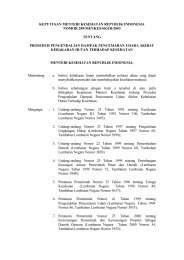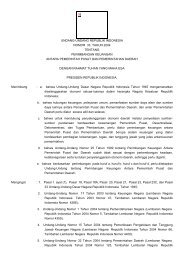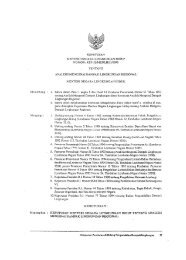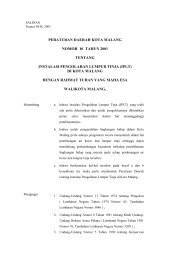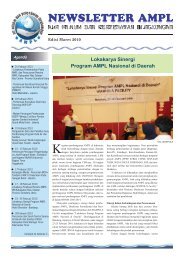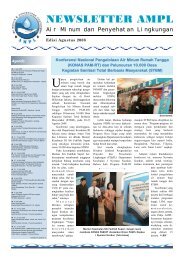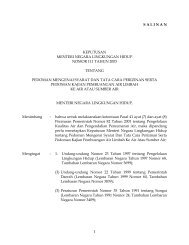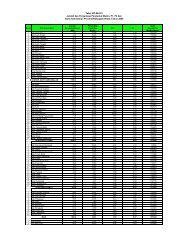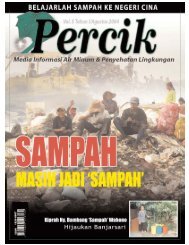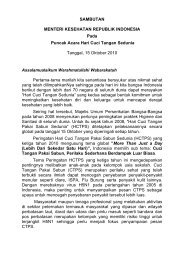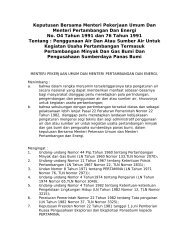PDF - DigiLib | AMPL
PDF - DigiLib | AMPL
PDF - DigiLib | AMPL
- No tags were found...
You also want an ePaper? Increase the reach of your titles
YUMPU automatically turns print PDFs into web optimized ePapers that Google loves.
• INSIGHT•Iron (Fe) and Manganese (Mn)Content of Underground WaterBy: Ir. Iyus YusupKaSubag. Water Quality LaboratoriumPDAM Tirta Bumi Wibawa Kota SukabumiStaff of PDAM Tirta Bumi Wibawa Kota Sukabumi is collecting raw water in thetreatment location. Source: Exclusive.Survey and analysis of new raw water source quest for customerconsumption must always consider aspects inrelation with water quality, other than maximum watercapacity (debit). Quality consideration will provide informationregarding the nature of raw water physically, chemically, or bacteriological,that may cause problems in customer's health, orincrement of cost production because the water requiresadvance quality improvement.In this article, the writer will only discuss consideration withregards to raw water collection in relation with undergroundwater (well) quality for consumption/distribution/sale to thecustomer. The article may suit more as information regardingquantity condition of the raw water that is more and more limited,caused by more scarce and more polluted surface water thateventually people are looking for raw water alternatives, in thecity area in particular, of underground water (well).From the writer's experience in conducting research, test,and analysis of the underground water, either physically, chemically,or bacteriologic, underground water is very similar withthe surface water in term of water capacity and quality. Wellwater capacity decreased quickly during the dry season, and currentquality is relatively polluted. In the picture we can see thatwell water is physically clear during sampling, however, afterchemical test, the sample contains relatively high Iron (Fe) andManganese (Mn), and not qualified as clean water/drinkingwater.Pollution indication, as far as the writer knows, especiallyfrom bacteriologic analysis, is always show numbers of Coli andEschericia Coli bacteria. The same with chemical parametersthat always show content of Iron (Fe) and Manganese (Mn),with different concentration depends on sampling locations.Absence of Iron and Manganese components in the water isusually followed by content of other chemical components thatstill in compliance with the standard of clean/drinking water,which means that the raw water is relatively not polluted in termof chemical.Theoretically, Iron content is usually quite common inunderground water, which is not the case for Manganese component.However, Iron content usually followed by Manganesecontent. Water contains Iron and Manganese can still be used asclean water if the concentration is still under the maximum standardallowed (see: Table).MAXIMUM CONCENTRATION OF IRON AND MANGANESE INCLEAN/DRINKING WATERNo ParameterMinimum/maximum StandardDrinking water Clean water1. pH (acidity level)6,5 - 8,5 6,5 - 8,52. Iron Level (ppm)0,3 1,03. Manganese Level (ppm)0,1 0,54. VisuallyClearClearSource: SK. Menkes No. 907/Menkes/SK/2002 for Clean Water and Drinking Water18 PercikAugust 2008




